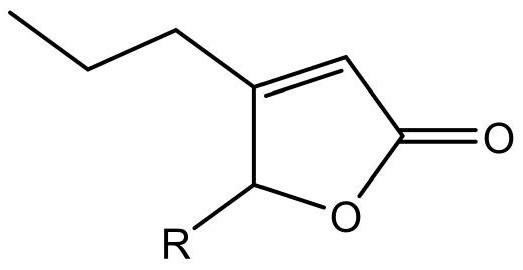A kind of ene reductase mutant and its coding gene and application
A reductase and mutant technology, applied in the ene reductase mutant and its coding gene and application field, can solve the problems of low catalytic efficiency, low limit of ene reductase application, high production cost, etc., and achieve high reaction conversion rate and excellent Catalytic activity, no waste discharge effect
- Summary
- Abstract
- Description
- Claims
- Application Information
AI Technical Summary
Problems solved by technology
Method used
Image
Examples
Embodiment 1
[0033] Embodiment 1: the establishment of wild-type ene reductase gene engineering bacteria
[0034] According to the wild-type gene sequence of Thermoanaerobacter pseudothanolicus ene reductase (GenBank: ABY93685.1) collected by NCBI, the whole gene fragment was artificially synthesized after sequence optimization, and the gene was inserted into the pET22b plasmid by the gene synthesis company through NdeI and BamHI endonucleases. The ligated vector was transformed into Escherichia coli BL21 (DE3) to establish the ene reductase gene engineering bacteria.
Embodiment 2
[0035] Embodiment 2: Acquisition of ene reductase mutant gene
[0036] In this study, after obtaining the three-dimensional structure of ene reductase (3KRU / 3KRZ) from PDB, the binding simulation between the substrate of formula I (R is OH) and protein was carried out through Docking, and finally, through Pymol analysis, the possible combination of substrate and NAD was selected. Amino acids associated with binding and NAD proton transport were used as mutant amino acids.
[0037] In addition to the above-mentioned rational design, this study carried out protein engineering on ene reductase by using error-prone PCR random mutation method. In general, error-prone PCR can be performed by adjusting the reaction conditions (such as increasing the concentration of magnesium ions, adding manganese ions, changing the concentration of four kinds of dNTPs in the system or using low-fidelity DNA polymerase) when the target gene is amplified by DNA polymerase. etc.) to change the mutati...
Embodiment 3
[0053] Example 3: Small scale production of ene reductase in shake flasks
[0054] Inoculate a single microbial colony of Escherichia coli containing a plasmid encoding the target ene reductase into 100 mL of LB medium containing ampicillin (100 μg / mL) (peptone 10 g / L, yeast extract 5 g / L, NaCl 10 g / L, pH7.2). E. coli was grown in a shaker at 37°C with shaking at 250 rpm for 16 hours. The ratio of transfer was 1:100. Put 1mL of bacterial culture solution in 100mL of LB medium containing ampicillin, and shake it under the same conditions. Measure the absorbance value of the bacterial solution at 600nm regularly to monitor the growth density of the bacterial cells. When the OD600 of the culture was 0.6 to 0.8, the expression of the ene reductase gene was induced by adding isopropyl β-D-thiogalactoside (IPTG) to a final concentration of 1 mM, and then the culture was continued overnight (at least 16 hours) . Cells were collected by centrifugation (10000 rpm, 10 min, 4°C), and ...
PUM
 Login to View More
Login to View More Abstract
Description
Claims
Application Information
 Login to View More
Login to View More - R&D
- Intellectual Property
- Life Sciences
- Materials
- Tech Scout
- Unparalleled Data Quality
- Higher Quality Content
- 60% Fewer Hallucinations
Browse by: Latest US Patents, China's latest patents, Technical Efficacy Thesaurus, Application Domain, Technology Topic, Popular Technical Reports.
© 2025 PatSnap. All rights reserved.Legal|Privacy policy|Modern Slavery Act Transparency Statement|Sitemap|About US| Contact US: help@patsnap.com



